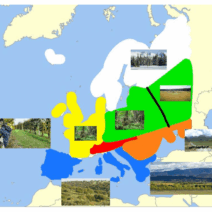As climate change continues to pose a dire threat to ecosystems and human societies alike, there has been an increasing interest in unconventional solutions to mitigate its effects. One such intriguing proposition lies in the cultivation of marijuana, a plant often associated with recreational use but whose environmental implications spark a significant debate. Does growing marijuana meaningfully contribute to the fight against global warming? This examination seeks to unearth the truths surrounding this green initiative.
To approach this issue, one must first understand the fundamentals of photosynthesis. All plants absorb carbon dioxide (CO2) from the atmosphere during this natural process and convert it into oxygen while simultaneously storing carbon in their biomass. In this regard, could marijuana contribute positively by sequestering carbon? On the surface, the answer appears affirmative. Cannabis, like other flowering plants, has the capacity to absorb carbon through its vigorous growth patterns, potentially playing a role in the reduction of greenhouse gases.
However, the environmental impact of marijuana cultivation transcends mere carbon absorption. Several factors must be considered to present a holistic understanding of its role in combating climate change.
One critical aspect is the environmental cost of growing marijuana, especially in intensive agricultural systems. In regions where marijuana is cultivated indoors, the energy requirements soar. In fact, indoor cannabis farming requires substantial amounts of energy for lighting, ventilation, and climate control, which often results in a considerable carbon footprint. A study showed that indoor cultivation can consume more electricity than residential areas, consequently leading to higher CO2 emissions rather than reducing them. The energy-intensive nature of indoor grows poses a paradox; while marijuana plants can sequester carbon during their lifecycle, the very method of growing them may negate those benefits.
Moreover, the water footprint of marijuana is another essential consideration. Water scarcity jeopardizes many parts of the world, yet marijuana cultivation, particularly in regions with limited water resources, often demands an extraordinary volume. Some estimates indicate that the cultivation of one pound of marijuana may consume upwards of 3,000 gallons of water. This aggressive consumption exacerbates existing environmental stressors and poses challenges for sustainable agricultural practices.
On the other hand, outdoor cultivation may provide a more environmentally friendly alternative, provided it adheres to sustainable practices. When grown outdoors, marijuana plants can benefit from natural sunlight, reducing the reliance on artificial lighting. Furthermore, responsible outdoor farming can foster biodiversity and enhance soil health if integrated into agroecological systems. Companion planting, for instance, may allow marijuana to coexist with other crops, enhancing earth’s biological productivity while reinforcing local ecosystems.
Additionally, the economic dimension of marijuana production merits examination. As legalization spreads, it can stimulate economic opportunities in underprivileged areas. The green economy surrounding cannabis could promote sustainable agricultural practices and create jobs focused on environmental stewardship. The legal cannabis industry may become a pioneering force in advocating for renewable energy sources, organic cultivation methods, and sustainable land management practices. When aligned with environmental goals, such initiatives can position marijuana as a catalyst for positive ecological transformation.
Furthermore, the potential for industrial hemp—derived from non-psychoactive cannabis—should not be overlooked. Hemp possesses remarkable qualities that can directly contribute to sustainability efforts. Its utilization extends to textile production, biodegradable plastics, biofuels, and even construction materials. By substituting conventional materials with hemp, which sequesters carbon throughout its growth cycle, it can diminish reliance on fossil fuels and other environmentally harmful resources.
Moreover, hemp’s root system is extensive and possesses notable soil health-enhancing properties. It can improve soil structure, increase organic matter content, and prevent erosion, all vital in mitigating the adverse effects of climate change on agricultural land. Through these multifaceted applications, cannabis plants—particularly hemp—render themselves as versatile allies in the battle against global warming.
Interestingly, cannabis has also found its way into industrial applications such as carbon capture technologies. Some innovative approaches actively engage the plant in sequestering carbon from the atmosphere, effectively using its biological processes for climate remediation. As researchers continue to investigate these possibilities, one cannot dismiss the potential synergy between marijuana cultivation and the development of sustainable technologies.
However, it is vital to approach the cultivation of marijuana with an informed perspective. While this plant harbors the potential for multiple ecological benefits, one must navigate the intricate tapestry of agricultural practices to fully understand its implications for environmental sustainability. The nuances—the energy demands, water consumption, and land-use decisions—must guide responsibly curated cultivation efforts.
As the discourse surrounding climate change evolves, so too should our examination of unconventional allies in this fight. Marijuana, with all its complexities, presents a compelling case not only for reconsideration of its societal role but also for its potential environmental benefits. Moving forward, the challenge lies in adopting responsible cultivation methods that help harness the advantages of marijuana while minimizing its environmental costs. The path of integrating cannabis into our ecological toolkit points toward a broader and more multifaceted understanding of how we might combat climate change, fostering curiosity and prompting reflection on our role in a sustainable future.








